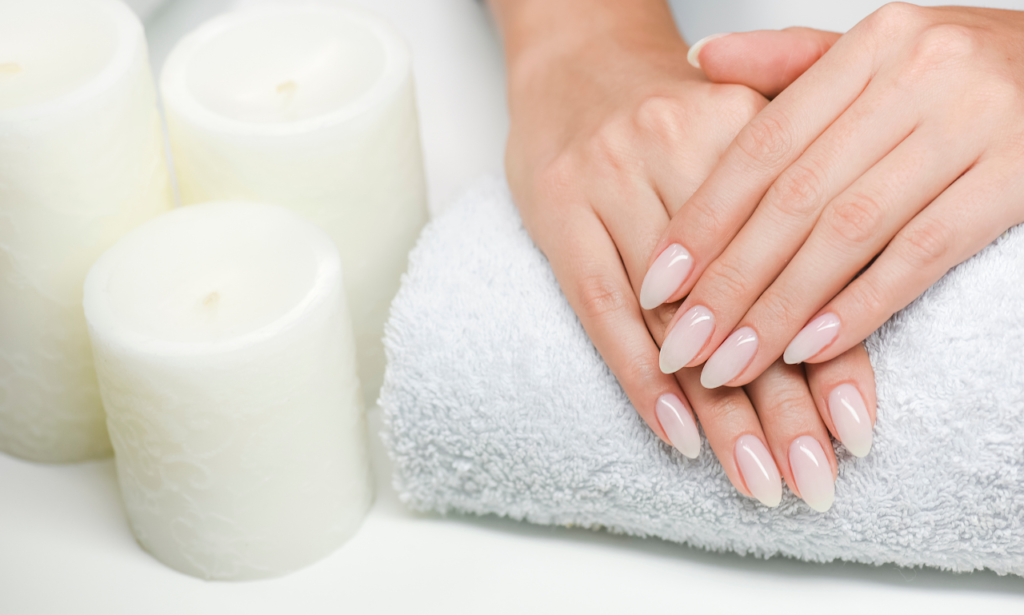Nail care is not a one-size-fits-all approach. Just as our skin and hair vary in type and needs, so do our nails. Understanding your nail type is essential for providing the proper care and maintenance they require. In this article, we’ll explore Nail Care for Different Nail Types tips tailored to oily, dry, and brittle nails to help you achieve healthy and beautiful nails.
Introduction
Nails are more than just a fashion statement; they can also be indicators of our overall health and well-being. Different nail types require different levels of care and attention to maintain their strength and appearance. Whether you have oily, dry, or brittle nails, there are specific strategies you can implement to keep them looking their best.
Understanding Nail Types

Characteristics of Oily Nails
Oily nails tend to have excess sebum production, which can lead to a shiny appearance and increased susceptibility to dirt and bacteria buildup. Individuals with oily nails may also experience faster nail growth and a tendency for nail polish to chip or peel.
Characteristics of Dry Nails
Dry nails lack moisture and may appear dull, brittle, or prone to splitting and breakage. Factors such as frequent handwashing, exposure to harsh chemicals, and environmental conditions can contribute to dryness and dehydration of the nails.
Characteristics of Brittle Nails
Brittle nails are characterized by weakness, thinness, and a tendency to split or break easily. This nail type may be caused by factors such as nutritional deficiencies, hormonal changes, or excessive exposure to water and chemicals.
Nail Care for Oily Nails
Proper Cleansing and Drying Techniques
To effectively manage oily nails, it’s essential to cleanse them regularly with a gentle soap or nail cleanser to remove excess oil and debris. Avoid using harsh products that can strip the nails of their natural oils. After cleansing, be sure to thoroughly dry your nails to prevent moisture buildup and bacterial growth.
Choosing the Right Nail Products
Opt for nail products specifically formulated for oily nails, such as oil-free nail polish removers and matte-finish nail polishes. Look for products labeled as non-comedogenic or oil-free to prevent clogging the pores around the nails.
Moisturizing Without Overloading
While oily nails may not require as much external moisture, it’s still essential to keep them hydrated to prevent dryness and brittleness. Choose lightweight, oil-free moisturizers and cuticle oils to nourish the nails and surrounding skin without overloading them with excess oil.
Nail Care for Dry Nails

Hydration and Moisturization
Dry nails benefit from regular hydration and moisturization to restore moisture and prevent further dehydration. Apply a rich moisturizer or cuticle oil to the nails and cuticles daily to replenish lost moisture and improve nail flexibility.
Avoiding Harsh Chemicals
Avoid using nail products containing harsh chemicals such as formaldehyde, toluene, and dibutyl phthalate (DBP), as these can further dry out and damage dry nails. Opt for gentle, nourishing formulas that are free from these harmful ingredients.
Using Nourishing Treatments
Incorporate nourishing treatments into your nail care routine, such as hydrating nail masks, strengthening serums, or keratin-infused nail polishes. These treatments can help fortify and repair dry nails, promoting healthier and more resilient nail growth.
Nail Care for Brittle Nails
Strengthening and Fortifying Treatments
Brittle nails benefit from strengthening and fortifying treatments designed to improve nail resilience and reduce breakage. Look for products containing ingredients such as biotin, vitamin E, and keratin to strengthen and protect brittle nails.
Also Read: Nail Strengthening Treatments: Strengthen Your Nails Naturally and Effectively
Protecting Nails from Damage
To prevent further damage to brittle nails, avoid activities that can weaken or stress the nails, such as excessive filing, picking, or using nails as tools. Wear gloves when performing household chores or working with harsh chemicals to protect your nails from damage.
Incorporating Vitamins and Nutrients
Ensure your diet includes essential vitamins and nutrients that support nail health, such as biotin, vitamin B7, vitamin C, and omega-3 fatty acids. Consider taking supplements or eating foods rich in these nutrients to promote strong and healthy nails from the inside out.
Common Mistakes to Avoid
Overuse of Nail Products
Using too many nail products or overdoing certain treatments can overwhelm the nails and lead to further damage. Stick to a simple and consistent nail care routine tailored to your specific nail type to avoid overloading your nails with unnecessary products.
Ignoring Signs of Nail Health Issues
Ignoring signs of nail health issues such as discoloration, changes in texture, or persistent nail problems can lead to more significant issues down the line. Pay attention to any changes in your nails and seek professional advice if you notice any concerning symptoms.
Neglecting Overall Health
Nail health is closely linked to overall health and well-being. Neglecting factors such as hydration, nutrition, and stress management can impact the health and appearance of your nails. Prioritize self-care and wellness practices to support healthy nail growth and maintenance.
Conclusion
Proper nail care is essential for maintaining healthy and beautiful nails, regardless of your nail type. By understanding your nail type and implementing targeted nail care strategies, you can overcome common nail challenges and achieve the strong, resilient nails you desire. Remember to prioritize hydration, moisturization, and nourishment to support optimal nail health and vitality.
FAQs
- How can I determine my nail type?
- You can determine your nail type by observing the characteristics and behavior of your nails, such as oiliness, dryness, brittleness, and susceptibility to breakage.
- What are some signs of nail damage?
- Signs of nail damage include discoloration, changes in texture, peeling, splitting, brittleness, and pain or discomfort. If you notice any of these signs, it’s essential to address them promptly to prevent further damage.

